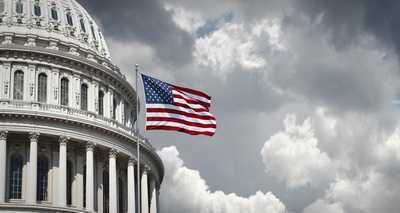House lawmakers heard testimony about a possible federal pandemic risk / business continuity insurance program during a hearing yesterday entitled, Insuring against a Pandemic: Challenges and Solutions for Policyholders and Insurers. (Webcast of hearing and witness statements)
- The Business Continuity Coalition (BCC), which includes The Real Estate Roundtable, submitted a hearing statement for the record to The House Financial Services Subcommittee on Housing, Community Development and Insurance. The subcommittee played a key role in last year’s seven-year extension of the Terrorism Risk Insurance Act (TRIA). (List of BCC members)
- The BCC announced on Oct. 28 that it aims to develop a public/private business continuity insurance program with policymakers and other stakeholders. Such a program would enable employers, in the event of a government-ordered shutdown, to keep payrolls and supply chains intact; help limit job losses and furloughs; reduce stress on the financial system; and speed economic recovery when government-imposed limitations on operations are lifted. (BCC launch news release)
- The BCC has emphasized that the COVID-19 crisis has shown the current lack of insurance availability for business continuity coverage for catastrophic pandemic events. This coverage gap raises concerns for policyholders and shows the need to enact an effective federal program.
- The BCC hearing statement submitted this week notes, “… if not remedied, these insurance gaps will hinder any recovery, especially impacting business lending, new leasing activity, retail and hospitality, housing construction and development, as well as media production. Private insurance alone cannot and will not remedy the gaps – at least not in the short-term – but private insurers need to be part of the solution. What is urgently needed is a federally-backstopped availability mechanism similar to the highly successful one which Congress put in place for terrorism following 9/11– in short, a TRIA-style program for pandemic risk.”
- A number of legislative proposals have been introduced to address the need for business continuity coverage – including the Pandemic Risk Insurance Act of 2020 (H.R. 6983).
- Roundtable President and CEO Jeffrey DeBoer on Sept. 25 discussed prospects for developing and enacting a federal pandemic risk-business continuity insurance program with Rep. Steve Stivers (R-OH), the Ranking Member on the House Subcommittee. (Video of the discussion)
- “We’ve seen business interruption insurance not being willing to cover any pandemics. I think you’re going to start to see lenders … requiring some type of pandemic coverage in their loan covenants in the coming years,” Stivers said.
- He added, “I think we need to make sure that if this ever happens again and the government shuts down the economy, [Congress] holds people harmless and businesses harmless in the future.” (Video of the discussion)
DeBoer commented, “The pandemic crisis has exposed gaps in business continuity insurance coverage that can only be filled by a national program that will provide the American economy with the coverage it needs to minimize the economic impact of pandemic-related shutdowns and aid economic recovery.”
# # #












